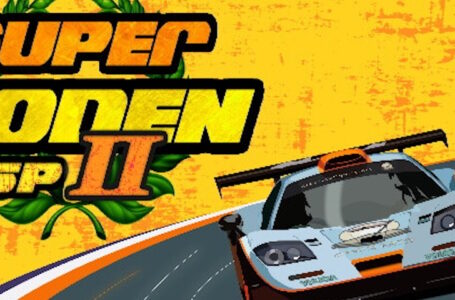Blissful Death: Eschatos and its textbook dramatic shooting
I should probably preface this, dear reader, with the fact that Eschatos from Qute is not only probably my favourite shoot ’em up of all time, but also one of my favourite games of all time. Consequently, you can expect some gushing praise to be forthcoming over the course of the next thousand or so words — but not without reason.
Because Eschatos really is an absolutely fine, fine shoot ’em up — and a great example of how solid choreography and visual design can make for an incredibly dramatic experience, despite the fact that not a single word (other than “Extend!”) is uttered during the whole game.
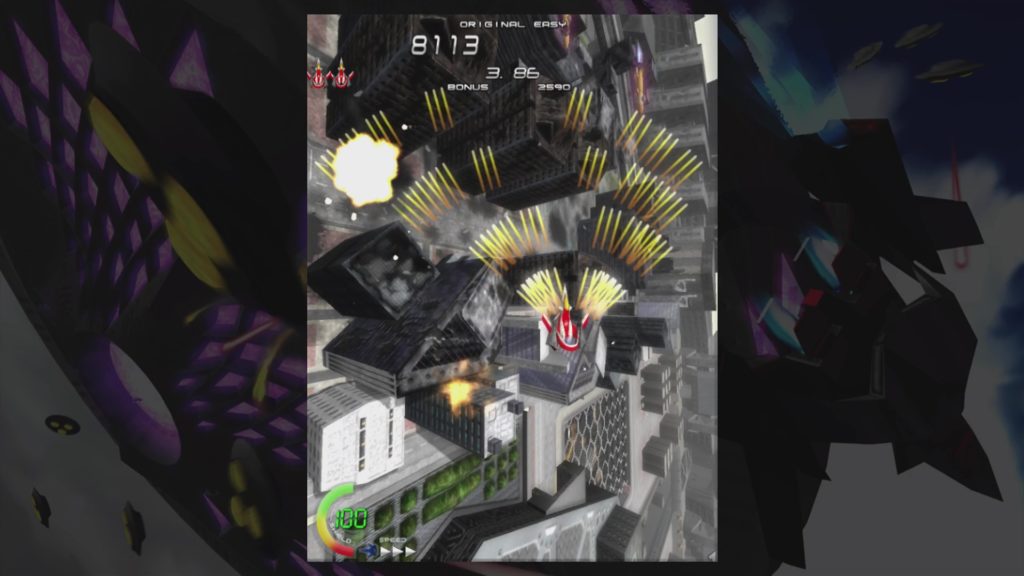
In Eschatos, you take on the role of the obligatory lone space pilot in the year 21XX. A mysterious (and pleasantly colour-coordinated) alien invasion force known as Purple Erosion has taken over the Moon, and it’s up to you to blast them into oblivion and save the human race.
Naturally, none of this actually matters one jot, and what you actually need to know is that in Eschatos you fly a little red spaceship and shoot bad guys big and small until they have all exploded spectacularly. Preferably, you will attain a high score in the process, but as with most shoot ’em ups your initial priority will likely be simple survival!
Eschatos is divided into several stages, each of which is split into distinct numbered areas, 26 in total. Each area confronts you with either several waves of enemies (which are learnable, since they are the same every time you play) or a multi-phase boss. The game unfolds as one continuous run; there’s no intermission or bonus screen between stages, so your only real break is a very brief load time as you move on to the next step in your journey. And it’s a thrilling journey indeed.
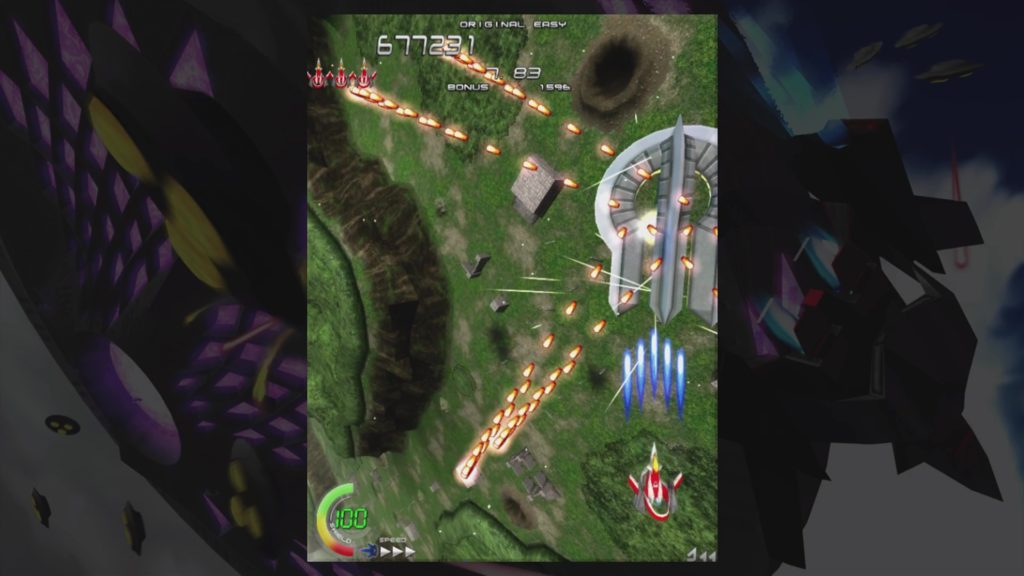
Your battle in Eschatos begins high above a cityscape before moving on to the countryside, blasting into space, through the enemy fleet and finally into the depths of the corrupted Moon. While the game primarily unfolds as a vertically scrolling shoot ’em up, there’s a definite cinematic angle to the whole thing; transitions between areas are often marked with dramatic flybys or temporary changes of perspective, and some areas even have the appearance of being quasi-3D, with you shooting “into” the screen.
Interestingly, in this latter case, the game still plays as if it was a vertically scrolling shoot ’em up; you can even see the left and right boundaries of the area in which you can move during these sequences. It’s a clever way of keeping the controls feeling consistent while still making full use of the polygonal visuals to provide as much of a spectacle as possible.
That spectacle doesn’t come at the expense of gameplay, however. Eschatos is designed extremely well, and its audio-visual aesthetic does a great deal to support how it plays. Perhaps most notably, Eschatos makes use of excellent audible cues, with every distinct type of attack that enemies make use of having its own instantly recognisable noise. Hear a repetitive dull thumping and you’ll know there’s a barrage of bullets headed your way; hear a high-pitched screeching sound and you know high-speed homing lasers are imminent; hear something that sounds like a gigantic cannon charging up and you know the drill — get out of the damn way!
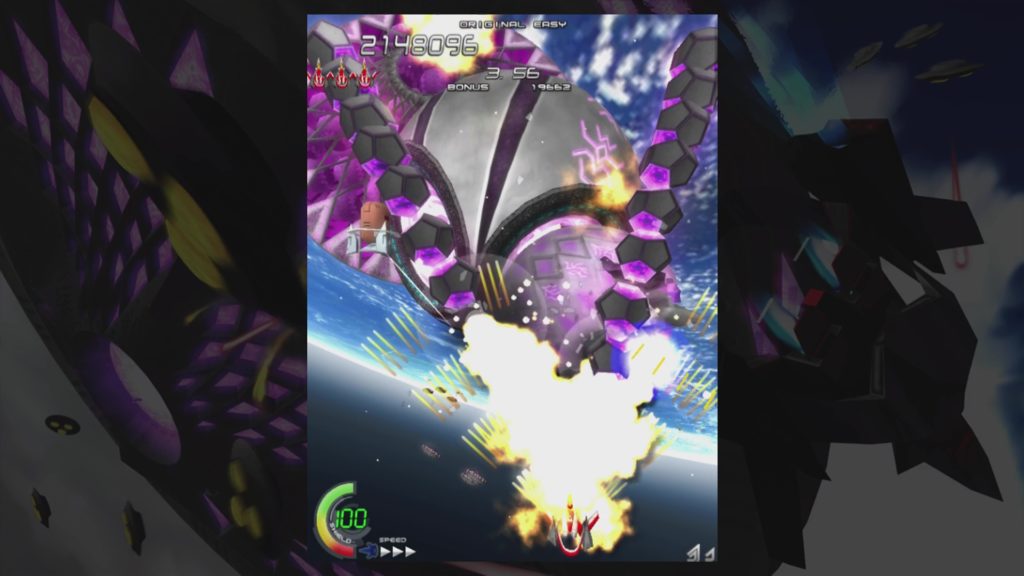
Many attacks and enemy patterns have clear visual telegraphs, which helps with learning the game as you take aim for a one-credit clear. And that one-credit clear is well within the reach of even more casual shoot ’em up fans on the game’s easiest difficulty — as with most games of this type, there’s absolutely no shame on starting at that level, since Eschatos is hard on its higher settings!
As you play, you’ll score points in various ways. Firstly, there’s the simple points awarded for shooting things. Secondly, there’s a bonus multiplier that accumulates as you dispatch enemy waves without letting any get past you. Thirdly, there’s a bonus timer for each area that awards you with a chunk of points (multiplied if applicable, of course) depending on how quickly you got through the hordes.
You may wonder how the latter aspect works given the choreographed nature of shoot ’em ups like Eschatos. In this instance, many areas conclude with a confrontation against slightly stronger (but not boss) enemies who take a fair amount of damage to defeat. This is where the majority of your time will be determined; you will, of course, need to avoid the attacks these enemies are flinging your way, but also make sure that you’re dealing as much damage as possible, too!
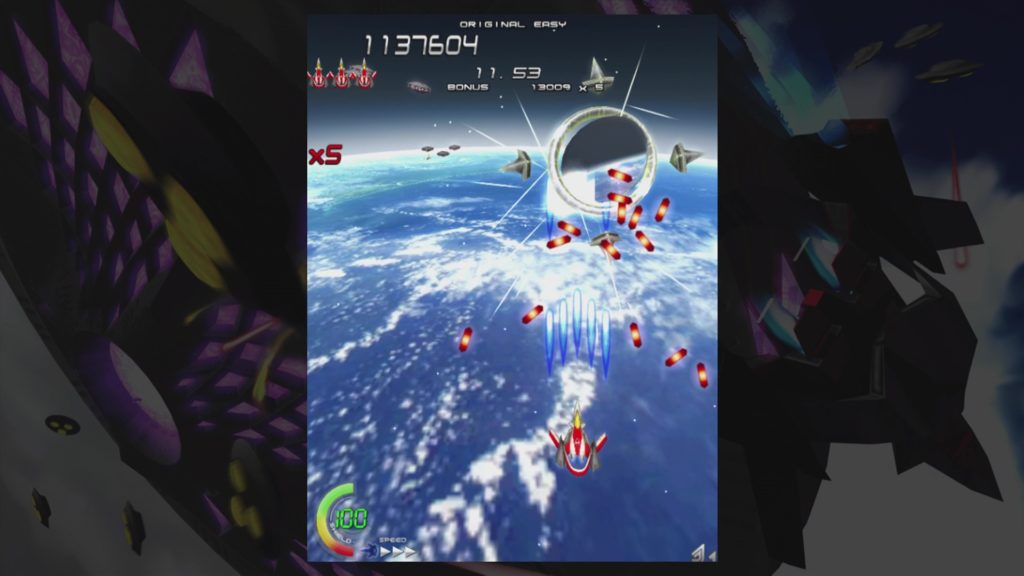
Your ship in Eschatos is armed with two main weapons. Its spread shot has a short range but, as you might expect, a wide area that it threatens. Conversely, the rapid-fire forward cannon extends the full length of the screen and deals more damage, but has a relatively narrow area of effect. You also have a shield that can temporarily protect you against frontal impacts — good for kamikaze swarms of enemies.
As you progress through the stages, you’ll also encounter special, instantly recognisable craft that drop power-ups, too; in the game’s “Original” mode, these are all the delightfully-named “F-Bombs”, which blow up everything on screen and cancel all bullets, but on the “Advanced” mode you have the opportunity to collect power-ups too, but be careful — as your guns get more powerful, your shield gets weaker!
Eschatos isn’t really a bullet hell game, but there are moments when the bullet patterns do get quite intense. For the most part, you’ll probably want to prioritise blasting as many enemies as possible before they can get their attacks off — but understanding the fancy flying you’ll need to perform to keep safe in more danmaku-style situations is essential in the later stages of the game. The final boss in particular will throw everything it’s got at you — as well it should.
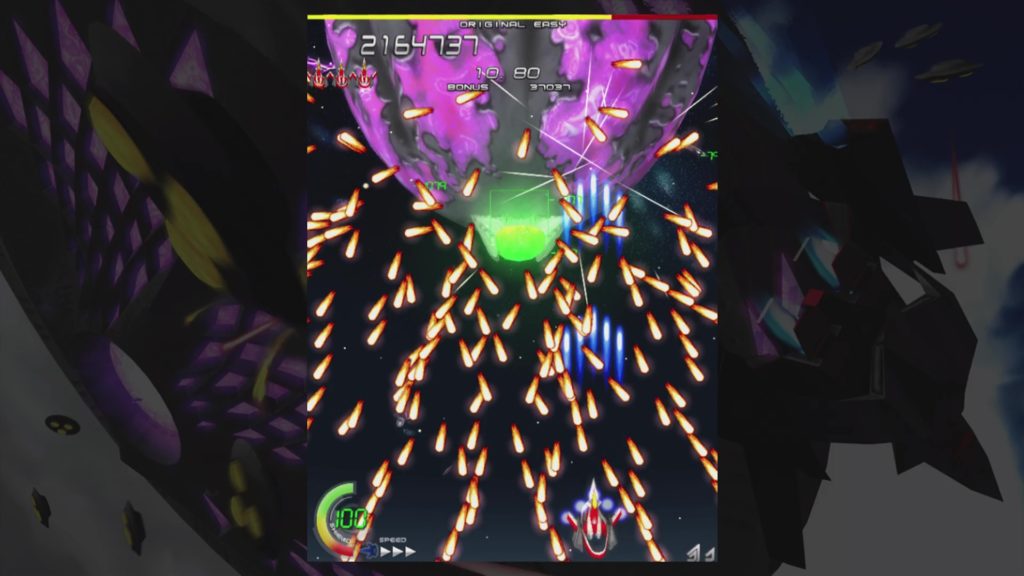
With several ways to play and that simple but effective, rewarding and unforgiving score multiplier system, Eschatos is a shoot ’em up which will keep you busy for ages even once you’ve seen the credits roll for the first time. If you’re anything like me, you’ll want to replay through its 25-minute long mission time after time just to hear the amazing music by Yousuke Yasui (and it really is amazing) and enjoy the spectacular finale — but if you take your shoot ’em ups really seriously there’s plenty of depth to dive into here, too.
So what are you waiting for? Dive in on PC now — or if you’re feeling flush, drop two hundred and seventy quid on the region-free Xbox 360 version over at Play-Asia — you get a copy of Ginga Force and a soundtrack CD with it too. Here’s hoping we get a more affordable PS4 and/or Switch version someday for those who want a physical copy!
Join The Discussion
Rice Digital Discord
Rice Digital Twitter
Rice Digital Facebook
Or write us a letter for the Rice Digital Friday Letters Page by clicking here!
Disclosure: Some links in this article may be affiliate links, which means we may earn a small commission if you make a purchase after clicking on them. This is at no additional cost to you and helps support Rice Digital!
- Letter from the Editor: passing the torch - June 30, 2023
- Super Woden GP 2 is looking promising - June 30, 2023
- Inti Creates is making a 32 bit-style Love Live action platformer - June 26, 2023





